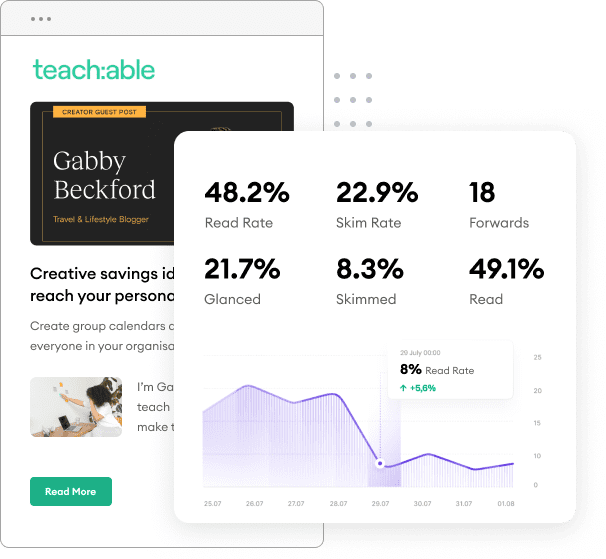Are you having trouble turning leads into sales? This could be because you’re not maximizing your lead nurturing strategy. Or maybe your lead nurturing strategy is doing more harm than good. Don’t fret, because this post is here to help you identify mistakes you may be making in your lead nurturing strategy and once these mistakes are identified, you’ll start turning more leads into sales.
A lead nurturing strategy is just as important as your strategy to generate leads. If you’re generating a ton of leads but aren’t nurturing them correctly, you might as well not be generating them in the first place.
The following 5 mistakes are common content marketing mistakes when it comes to any lead nurturing strategy. If you recognize any of these as mistakes that you’re making, there is plenty of time and strategies to fix the problem!
Researching buyer personas and the type of content that resonates with your audience is a crucial part of the initial phase when implementing a lead nurturing strategy.
Identifying pain points that your target buyers experience helps you develop the type of content to drip them.
Also understanding the customer’s journey as it is unique to your brand is an important part of the research phase. The journey makes you aware of what to drip your leads and when to drip it to them.
How to fix it: Carve out time in your schedule and spend time creating your buyer personas, this template from HubSpot is a great resource to use. After you’ve created your buyer personas, map out your consumer’s journey on a piece of paper. Note the questions and pain points they will encounter and make a plan to solve these pain points with the right content.
A lot of marketers make the mistake of doing a sales pitch too soon. Leads need a healthy amount of thought leadership and educational content so that you can establish brand credibility and brand trust before you make the sales pitch.
The sales pitch can also happen too soon if you’re marketing goals aren’t aligned with your sales team. Sales teams can sometimes jump in and do the sales pitch before you’ve had the chance to nurture the lead. So, it’s crucial that sales and marketing goals are aligned.
How to fix it: Set up an email drip campaign that drips leads 5 emails/pieces of content before you lay your sales pitch on them. Make sure sales is aligned with this goal so that they don’t reach out to leads until they’re “hot.”
Your lead nurturing program churns out a lot of data. Are you analyzing this data? From open rates to conversions, there are a lot of clues in your campaign data when it comes to your lead nurturing strategy. Some things to examine are:
After examining this data, you will be able to make tweaks that will convert more leads into sales.
How to fix it: Monitor your data once a week and refine your lead nurturing program on a continuous basis. Each week, you should start to see better and better results. When you identify which pieces of content have the highest conversion rates, be sure to make more of that type of content.
Because you are putting out fresh content every week, you’re going to want to continuously update your lead nurturing drip. Many marketers make the mistake of creating a drip program and leaving it alone for too long. This content can become out of date and your leads can feel like they’re not getting new information from your brand.
One thing to note, though, is that your drip should keep a balance of being filled with your new content and with your best content. Things like ebooks and case studies have a longer shelf life and can stay a crucial piece of your drip campaigns for a while. Blog posts, however, should be updated every few weeks so that your leads feel like they’re getting the latest information.
How to fix it: When it comes to blog posts in your drip campaign, refresh them once a month. When it comes to ebooks and case studies, refresh them every 6 months.
There are a lot of things to consider when uncovering the content that converts. First, mapping out your buyer’s journey can clue you into what types of content will convert a lead into a sale. Second, monitoring campaign data will clue you into what types of content will convert a lead into a sale. Between these two things, you should have a pretty good understanding of what types of content turn leads to sales for your brand.
How to fix it: Common forms of converting content are white papers and case studies so be sure to use these types of content at the end of your email drip sequence.
The lead nurturing mistakes that we’ve outlined occur commonly in both big and small brands so if you are making any of these mistakes, you’re not alone! Hopefully, we gave you some easy fixes for these mistakes so that your lead nurturing program will start converting more leads into sales.
A commonality in these mistakes is time so make sure that you budget enough of your time each week to analyze your campaign and continue to refine it. Although feeling like you already don’t have enough time in your day may be the reason you make these mistakes in the first place, it’s important to allocate time to analyzing and tweaking your strategy each week.
Do you make any of these lead nurturing mistakes? We’d love to hear from you on Twitter @Feed_Otter
